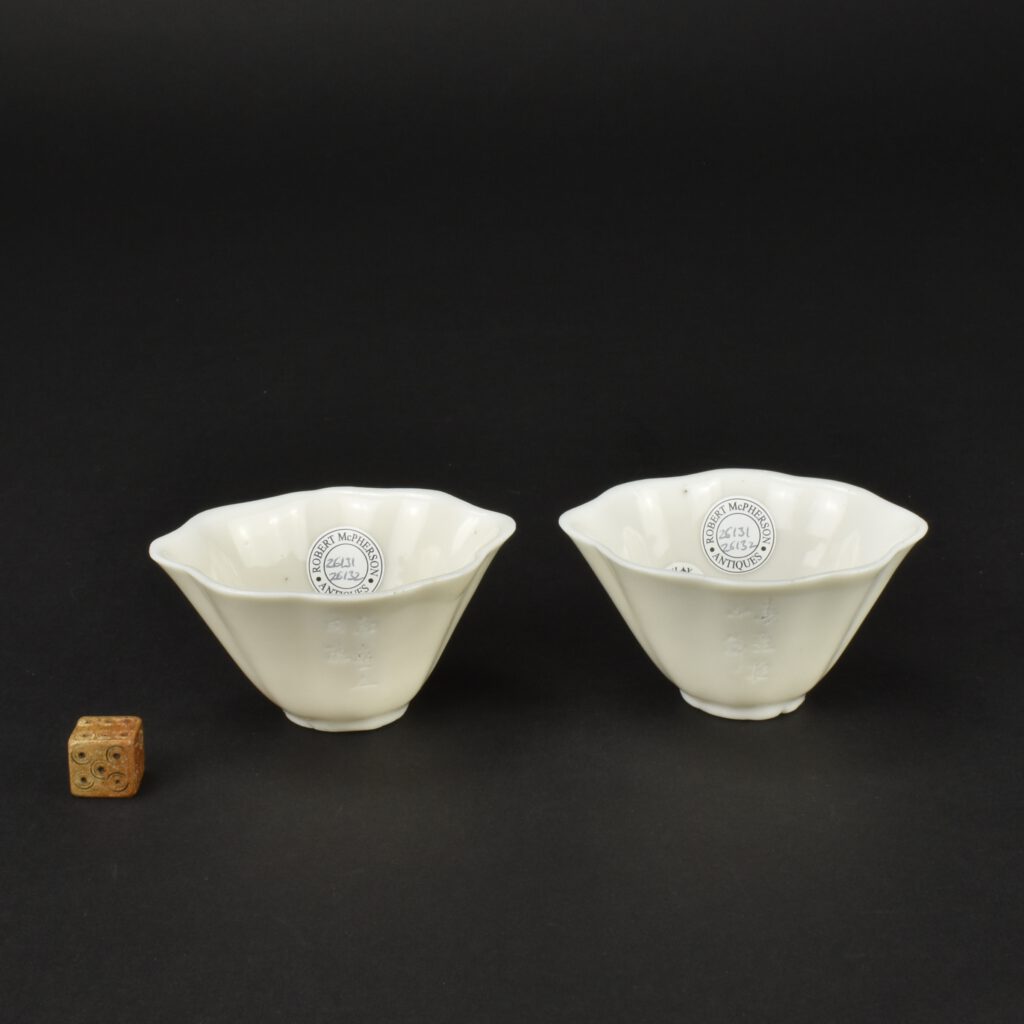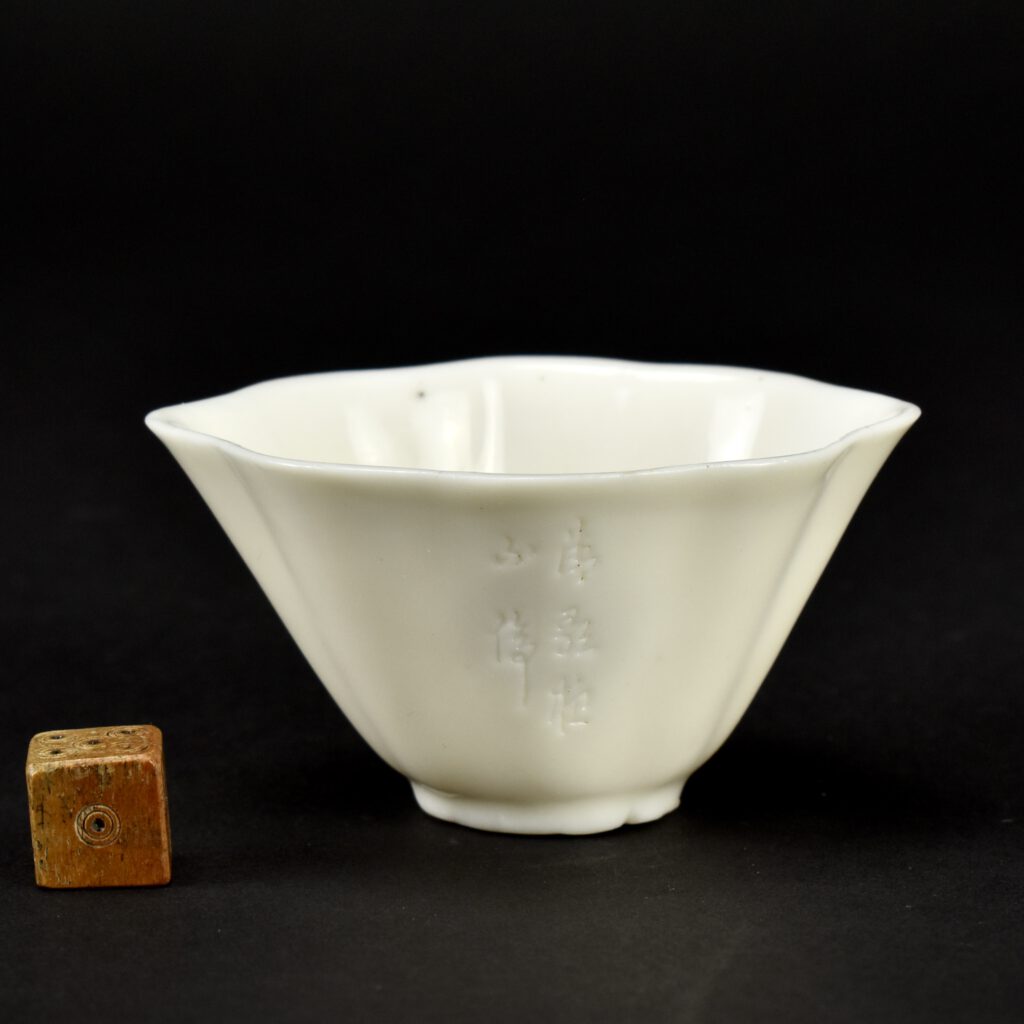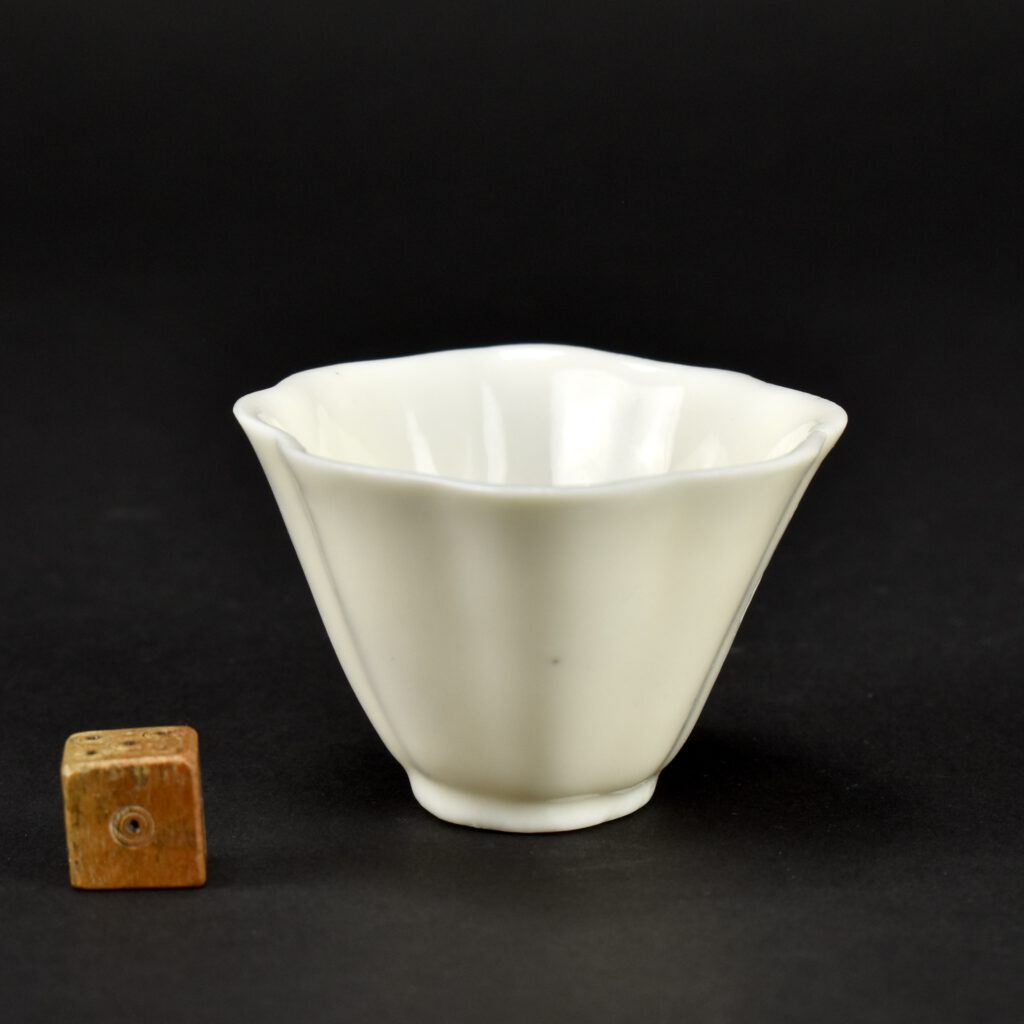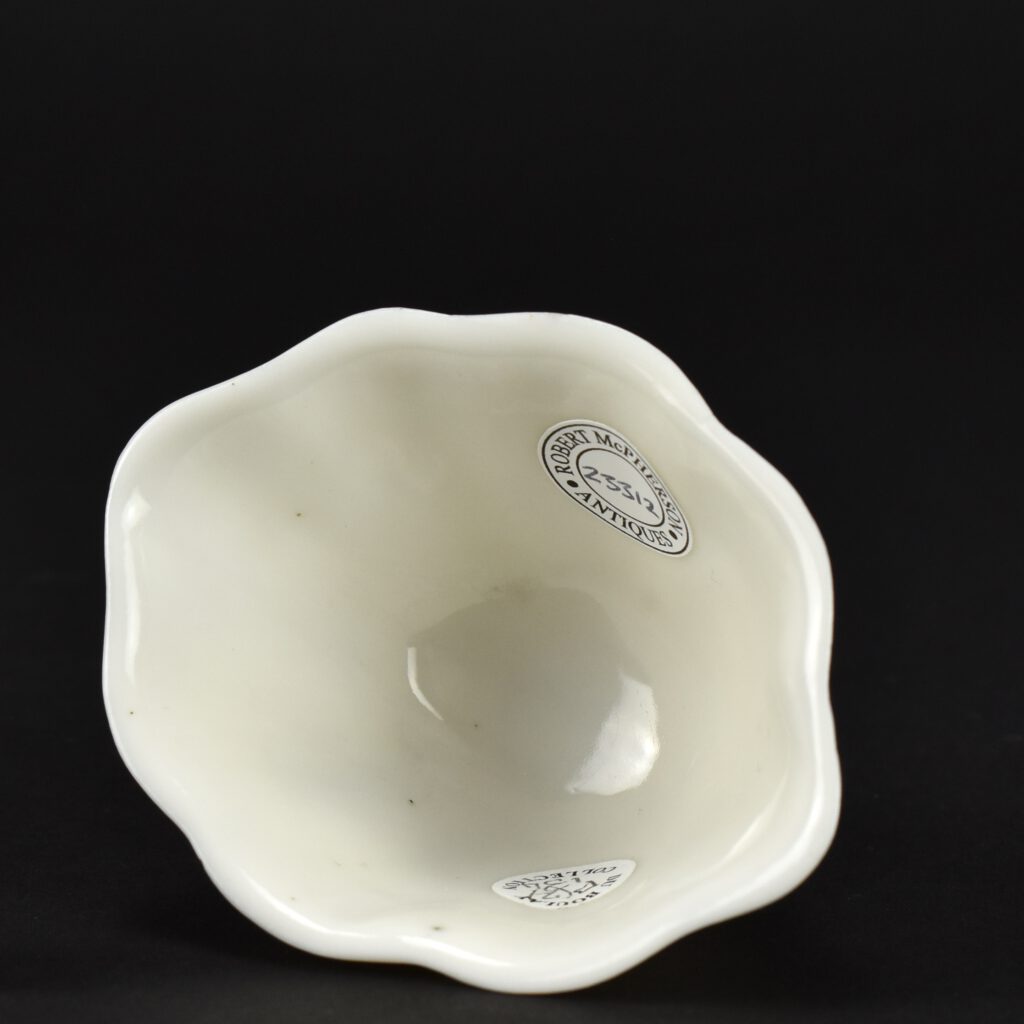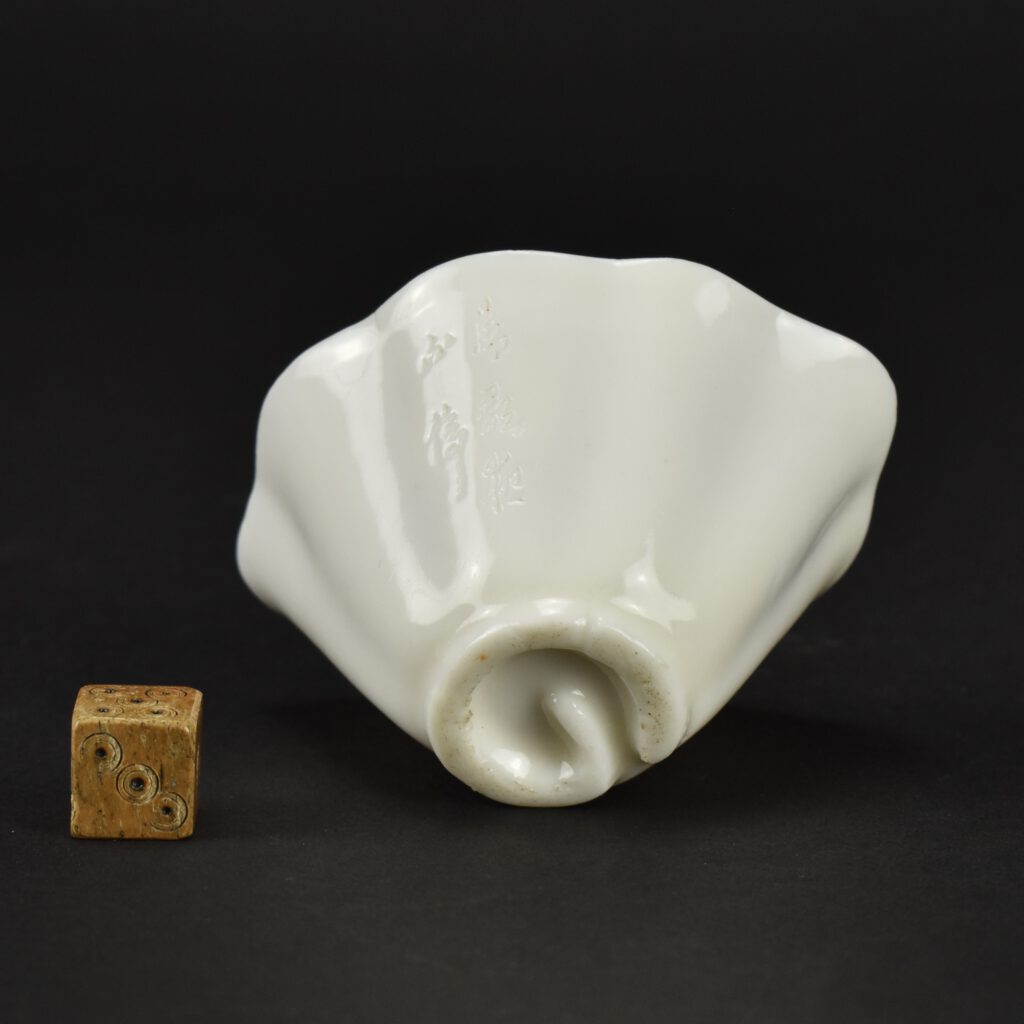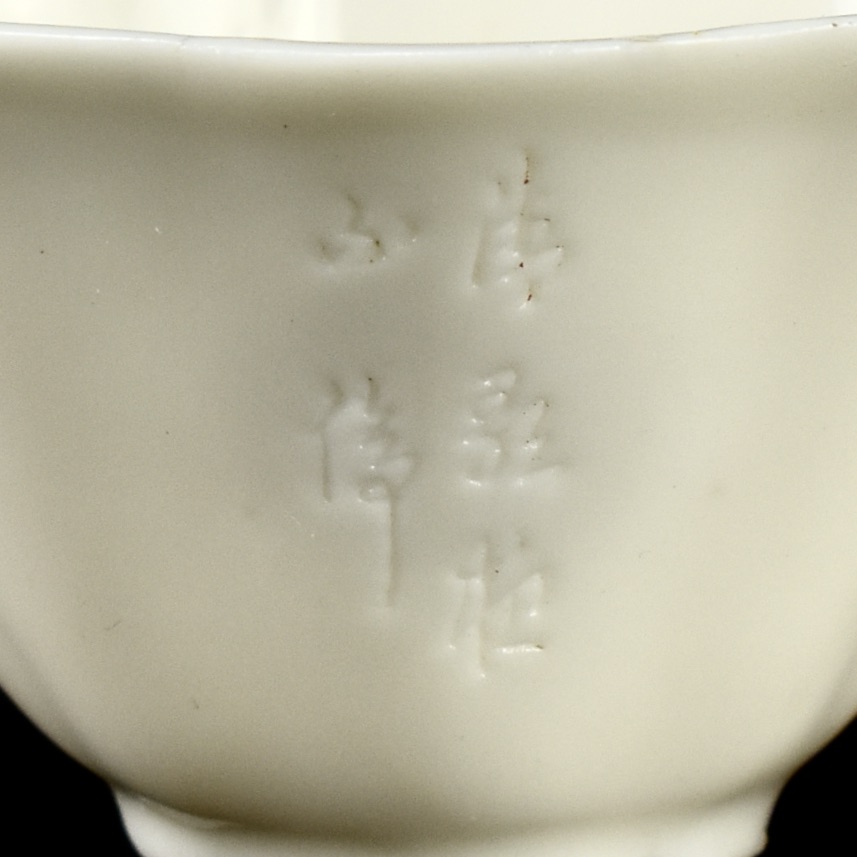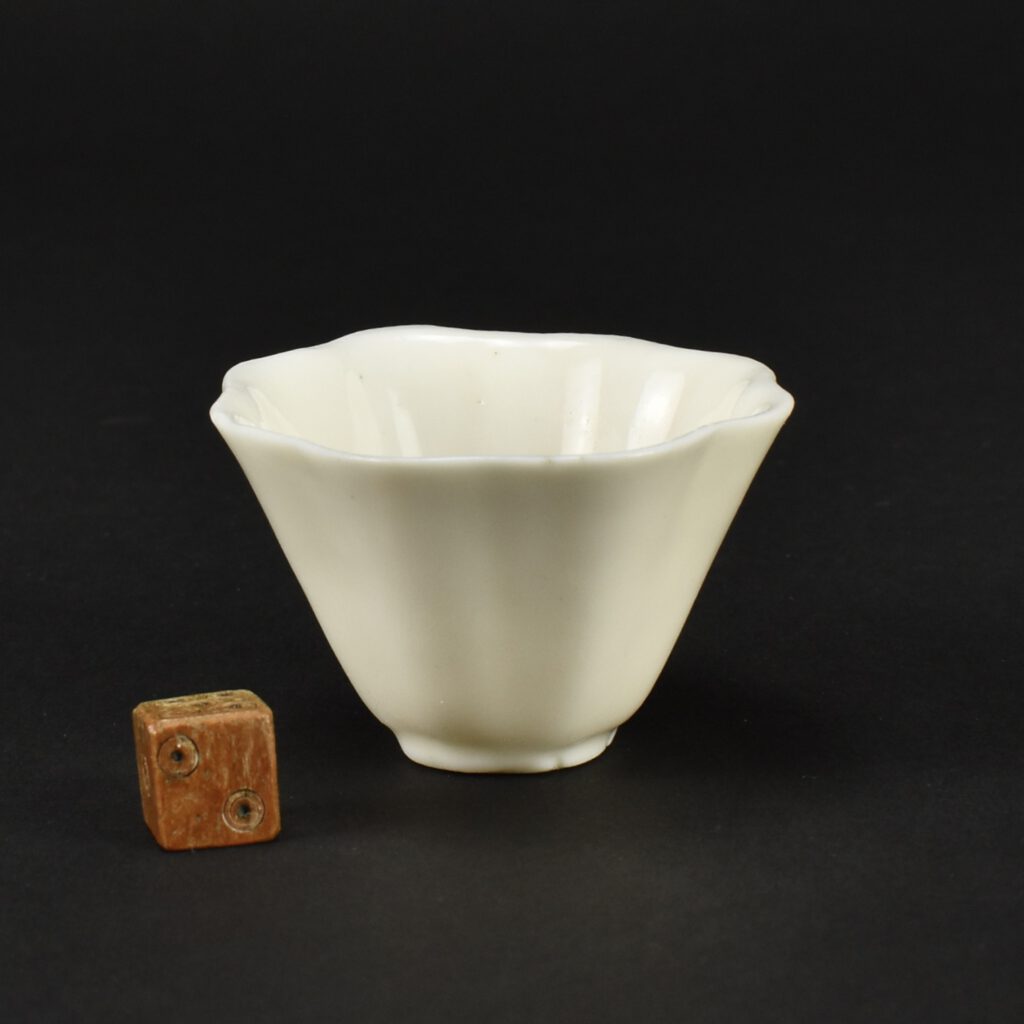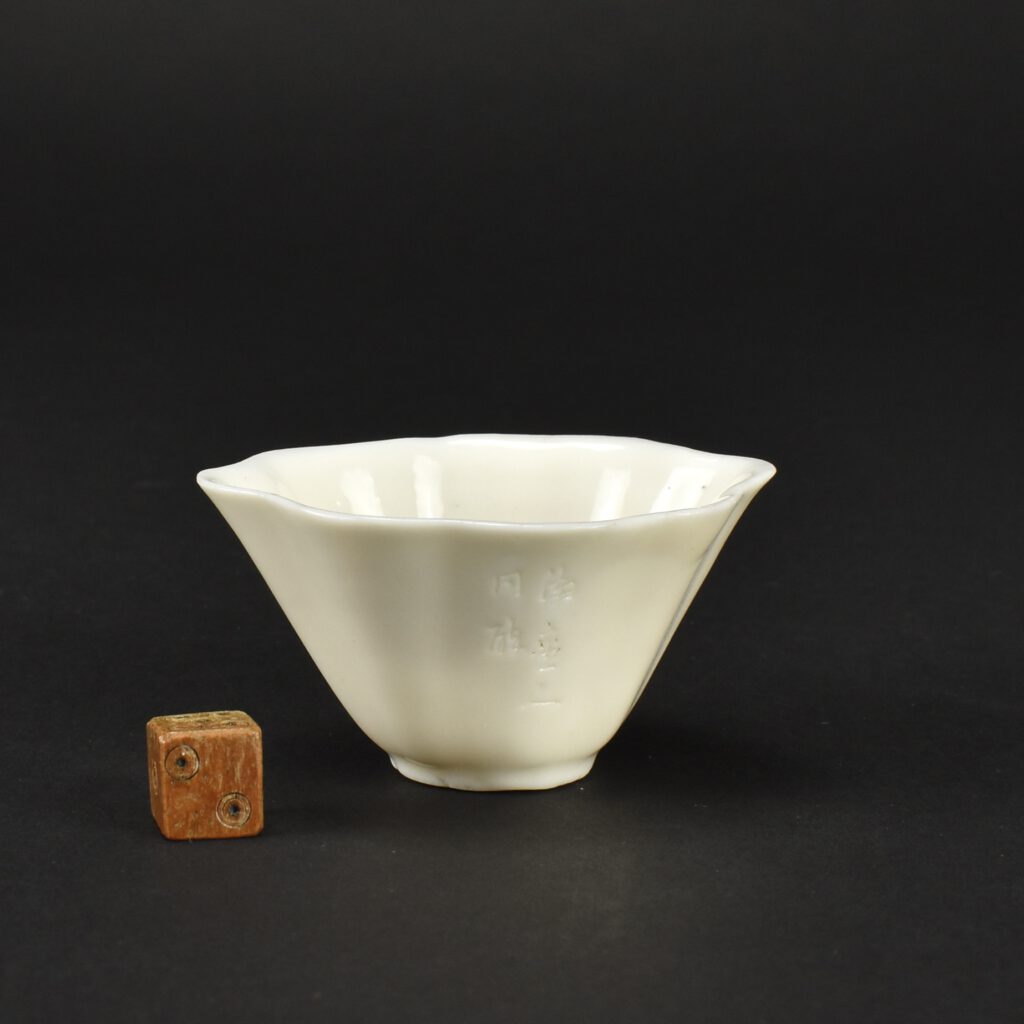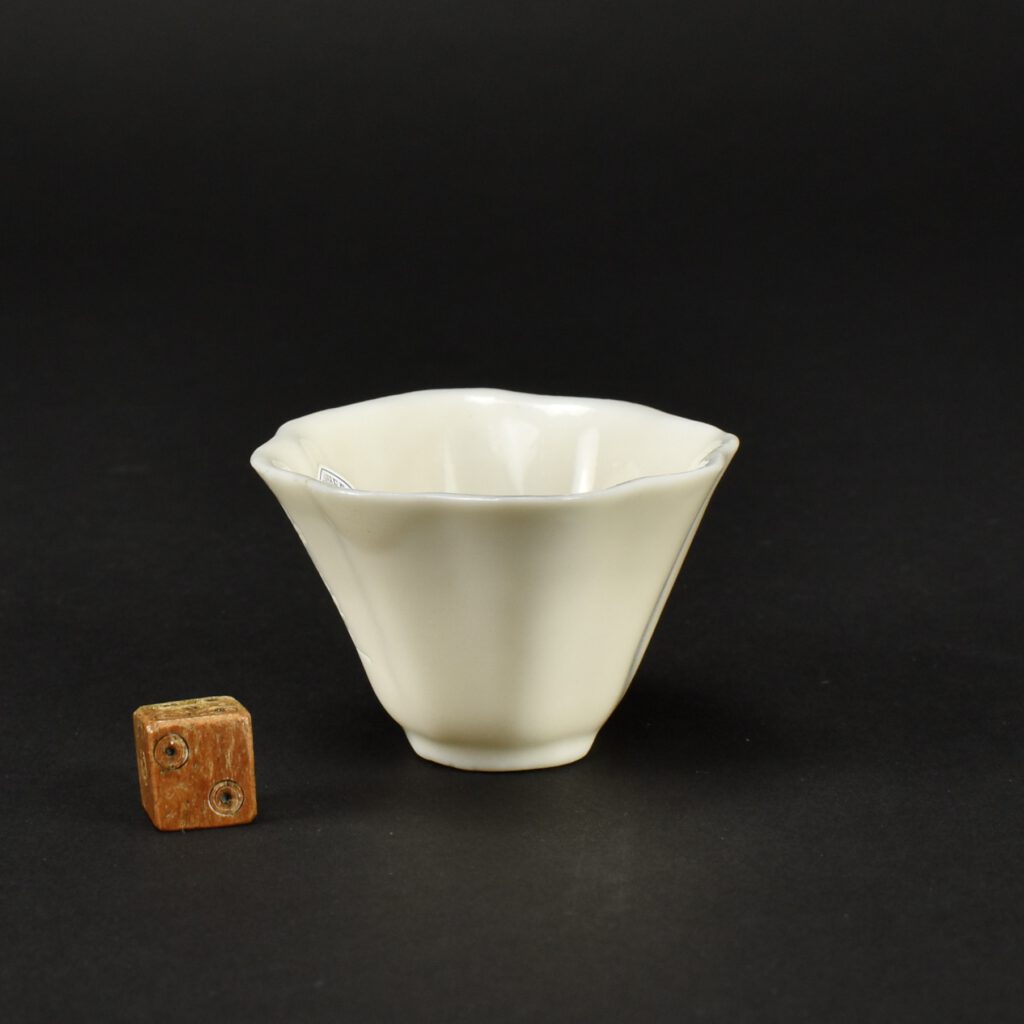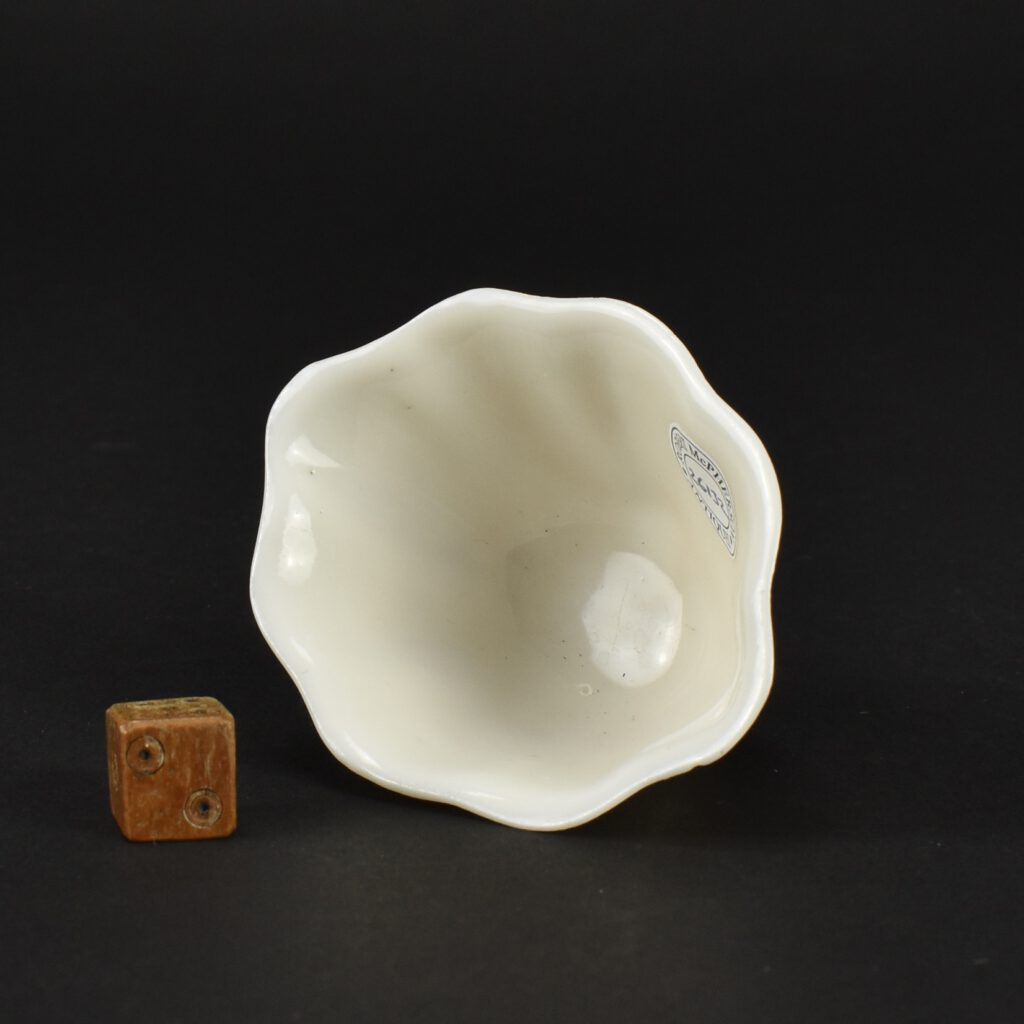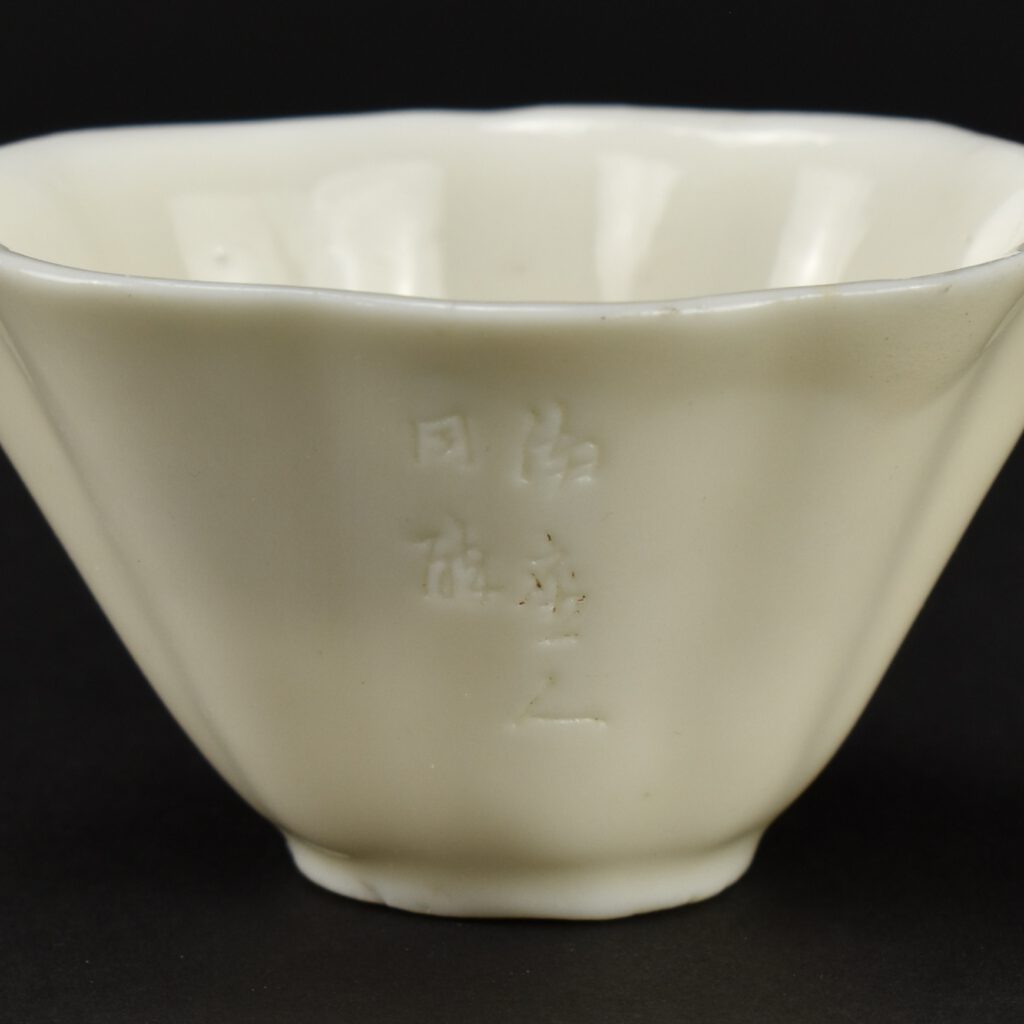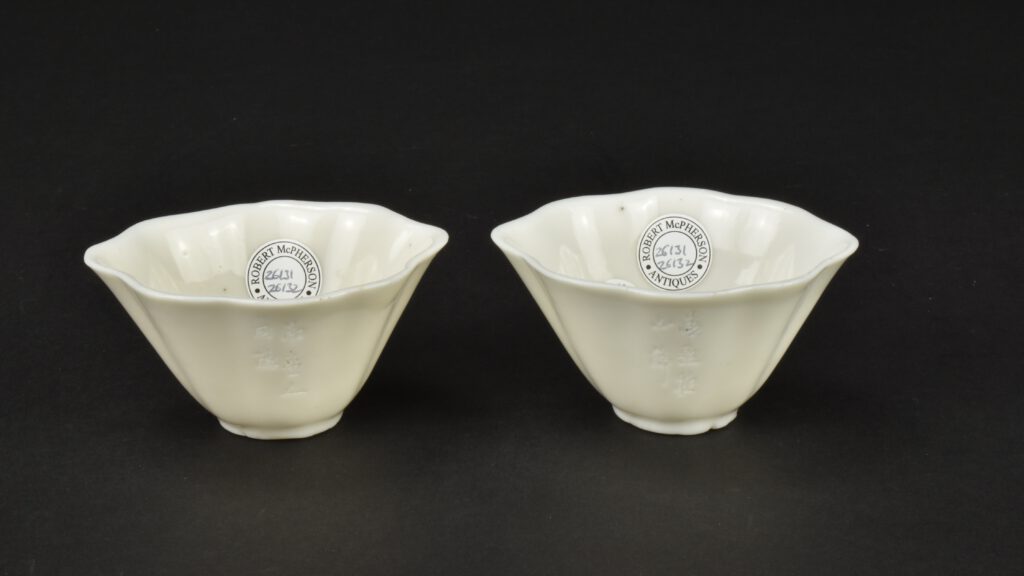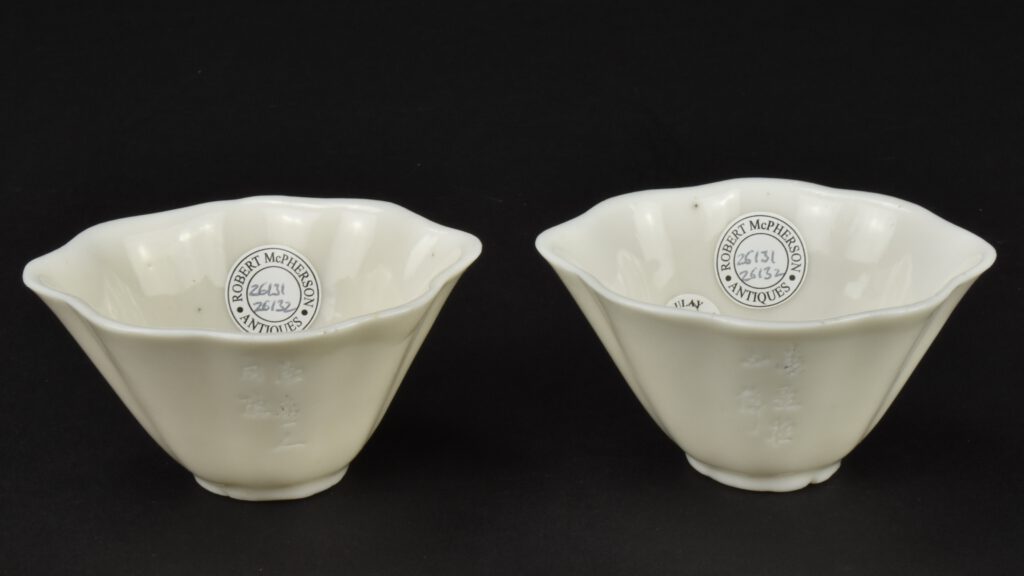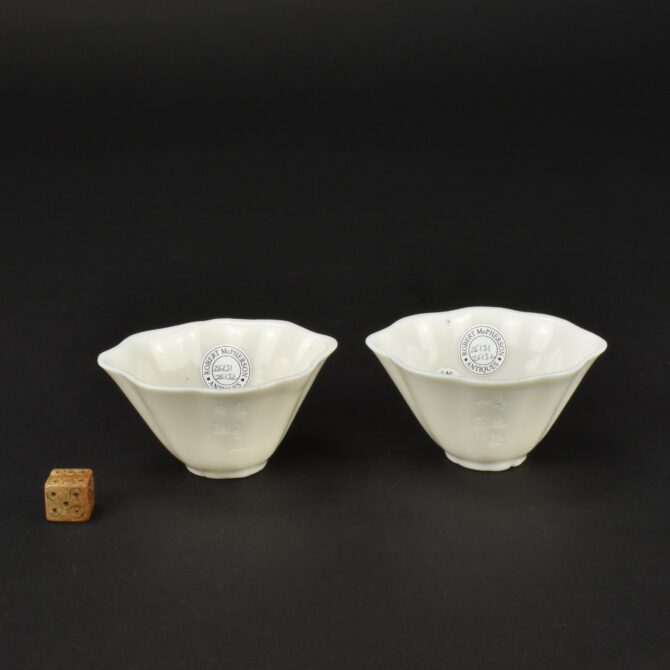
A Pair of Fine Inscribed Ming Blanc de Chine Wine Cups
A Pair of Fine Inscribed 17th Century Blanc de Chine Porcelain Wine Cups, Late Ming, Chongzhen, Dehua Kilns, Fujian Province c.1640. From the collection of Anthony du Boulay 1929-2022, see ‘Provenance’. Inscription incised through the glaze are quite common on Blanc de Chine porcelain. Executed when the Glaze was not quite dry, these inscriptions are in what is referred to as `cursive` or `grass script` and might have originally had either black or red seal-wax rubbed into to the incised characters to make them clearer to read. They could have been left plain, as An Hua (secret decoration). These inscriptions, typically just two lines long are normally poems related to the pleasure of drinking.
Chinese cursive script caoshu, also known as the Grass Script (an overly literal translation), is a style of Chinese calligraphy.These Blanc de Chine lotus leaf form cups are clearly wine cups, they match a pair in Blanc de Chine (Marchant, London. Exhibition catalogue, 2014, page 153, item 123) it gives a translation which appears to match these cups. From Marchant’s catalogue “incised with a five-character two-column grass-script poem, man zuo ren tong zui and yi dou wu shen gu, translated respectively ‘let those who are seated together get drunk; after one dou (gallon) of wine, I would not be lonely”. It is difficult to see from the photograph in the Marchant catalogue but the inscriptions appear to be the same as the present example. The bases of these cups are moulded to imitate the stalks of lotus flowers. The potting is very crisp and the cups have a rich creamy white look blushed with a pale pink, like most Blanc de Chine porcelain the colour is slightly different from one cup to the other. Many years ago I purchased 80 small Blanc de Chine cups from the Vung Tau Cargo of c.1690-1700. Despite playing with them for a long time I wasn’t able to make a perfect matching pair, every cup had a slightly different colour ,despite them being from the same batch on board a ship.
SOLD
Anthony du Boulay 1929-2022.

- Condition
- In excellent, a few minute frits to the rim.
- Size
- Diameter 7.9 cm (3 1/8 inches
- Provenance
- Stockspring Antiques, Kensington Church Street, London. From the collection of Anthony du Boulay 1929-2022. A few of his achievements: Christie's 1949-1980; for many years Director of the Ceramics Department and for thirteen years President of Christie's, Geneva; FSA. From 1981, for a number of years Honorary Adviser on Ceramics to the National Trust . He served several terms on council of the Oriental Ceramic Society; also Chairman of the French Porcelain Society and Chairman of the DNHAS (Dorset County Museum). Publications: “Chinese Porcelain: Pleasures and Treasures”, 1963; “Christie’s Pictorial History of Chinese Ceramics”, 1984; “Transactions of the Oriental Ceramic Society”, vol. 55, 1990-1991, pp. 83-102, ‘The Summer Palace, Beijing 1900: An Inventory by Noel Du Boulay, commandant 1900-1901’; John Ayers, J.V.G. Mallet, Oliver Impey, Anthony du Boulay and Lawrence Smith, catalogue, “Porcelain for Palaces”.
- Stock number
- 26132
- References
- A pair of very similar inscribed Blanc de Chine cups are shown in : Blanc de Chine (Marchant, London. Exhibition catalogue, 2014, page 153, item 123).
Information
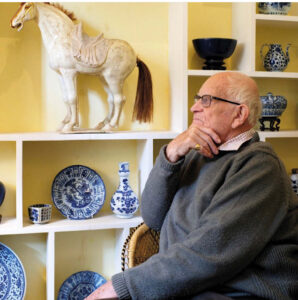
Cursive Script on Blanc de Chine Porcelain :
Inscription incised through the glaze are quite common on Blanc de Chine porcelain. Done when the Glaze was not quite dry, these inscription are in what is referred to as `cursive` or `grass script` and might have originally had either black or red seal-wax rubbed into to the incised characters to make them clearer to read. They could have been left plain, as An Hua (secret decoration). These inscriptions, typically just two lines long are normally poems related to the pleasure of drinking.
Chinese cursive script caoshu, also known as the Grass Script (an overly literal translation), is a style of Chinese calligraphy. The name originates from the Chinese character for "grass" cao, which also means loose and sketchy. Cursive script is faster to write than other styles, but also harder to read. It is quite often the case that people who are capable of reading printed Chinese find themselves completely illiterate when confronted with this particular style of writing. Cursive script originated in China during the Han dynasty through Jìn Dynasty period. An early form of cursive developed as a cursory way to write the popular and not yet mature clerical script. Faster ways to write characters developed and there were various styles of cursive script developed.
